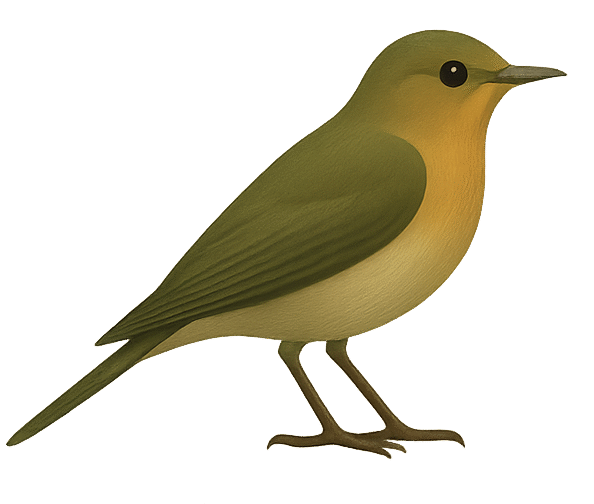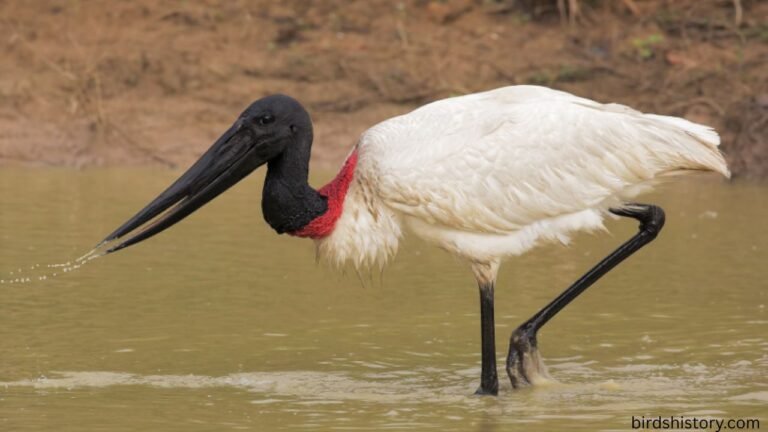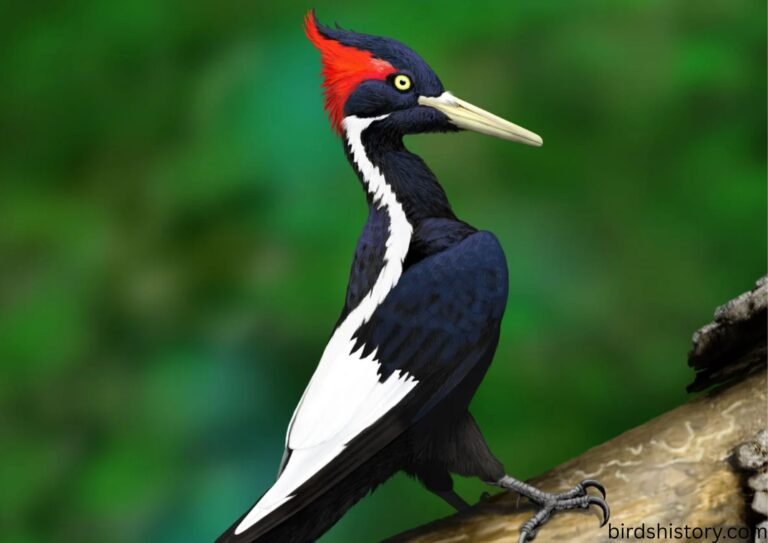Flightless Cormorant: The Rare Seabird of the Galápagos
Among the many fascinating creatures of the Galápagos Islands, few are as remarkable as the Flightless Cormorant. Unlike its relatives, which soar gracefully across oceans, this bird has completely lost the ability to fly. Instead, it has adapted to life in the water, becoming one of the most unique seabirds on Earth.
Found only in the Galápagos Islands of Ecuador, the Flightless Cormorant is a perfect example of how evolution works in isolation. With tiny, stubby wings and powerful webbed feet, it is an expert diver, capable of catching fish and eels with impressive speed.
One surprising fact? The Flightless Cormorant is unique among its species because it is the only one in the world that is unable to fly. This unusual trait, combined with its restricted habitat, makes it a symbol of both the wonders of natural selection and the fragility of island ecosystems.
Flightless Cormorant Taxonomy / Classification
Here’s how the Flightless Cormorant fits into the scientific classification system:
- Common Name: Flightless Cormorant
- Scientific Name: Phalacrocorax harrisi
- Family: Phalacrocoracidae
- Order: Suliformes
- Class: Aves
Also read: /white-headed-steamer-duck/
The species was first described in 1892 by Charles Wallace Richmond. Its scientific name, harrisi, honors Charles Darwin’s collector, Thomas Harris.
Flightless Cormorant Physical Description
The Flightless Cormorant is unlike any other member of its family.
- Size: Approximately 89–100 cm (35–39 inches) long
- Weight: Around 2.5–5 kg (5.5–11 lbs)
- Its plumage is a dull, dark brown to black color, which helps it blend in with the volcanic rocks in its habitat.
- Wings: Small and stubby, measuring only one-third the size needed for flight
- Tail: Short and stiff, helping with steering underwater
- Feet: Large and webbed, adapted for strong swimming strokes
- Beak: Long, hooked at the tip, perfect for catching slippery prey
Males vs. Females: Males are slightly larger, but otherwise, the two sexes look alike.
Unique Traits:
- Tiny wings that resemble flippers rather than flight feathers.
- Bright turquoise eyes, which stand out against their dark plumage.
- Sparse, ragged-looking feathers that lack the waterproofing seen in most seabirds, forcing them to dry their wings after swimming.
Habitat and Range of Flightless Cormorant
The Flightless Cormorant has an extremely restricted range, living only in the Galápagos Islands.
- This species is mainly located on the coasts of Fernandina Island and the western coast of Isabela Island.
- Environment:
- Rocky shorelines of volcanic islands
- Shallow coastal waters rich in fish
- Areas with cold, nutrient-rich currents
Because it cannot fly, the species stays close to the shoreline and never travels far inland. This species does not migrate and stays in one place.

Flightless Cormorant Diet and Feeding Habits
The Flightless Cormorant is a marine hunter that relies on its diving ability to survive.
- Diet:
- Small fish
- Eels
- Octopuses
- Other marine invertebrates
- Hunting Method:
- Dives from the surface, propelling itself underwater with powerful legs and feet.
- It uses its lengthy beak to grab prey from between volcanic rocks or from underwater seagrass.
- Can remain underwater for up to a minute before resurfacing.
Unlike other cormorants, which dive from the air, the Flightless Cormorant dives directly from the water’s surface.
Flightless Cormorant Behavior and Lifestyle
The Flightless Cormorant’s daily life is shaped by its unique physical limitations.
- Social Behavior: Generally solitary or in pairs, though small colonies form along coasts.
- Movement: Clumsy on land due to short legs, but agile swimmers.
- Vocalizations: Low grunts and croaking sounds; not as loud as other seabirds.
- Wing Drying: Like other cormorants, it often spreads its wings after swimming, even though its wings are useless for flight.
- Mating Rituals: Males perform a courtship display, stretching their necks, fluttering stubby wings, and bringing gifts of seaweed to females.
Though awkward on land, the Flightless Cormorant thrives in water, where it moves with grace and efficiency.
Reproduction and Lifespan of Flightless Cormorant
The Flightless Cormorant has a fascinating reproductive cycle.
- Breeding Season: Varies depending on food availability, often between May and October.
- Nesting Sites: Built on the shoreline, using seaweed, twigs, and debris.
- Eggs:
- Usually 2–3 eggs per clutch
- White and chalky in appearance
- For roughly 35 days, both parents take turns caring for the eggs until they hatch.
- Chick Care:
- Both parents feed the young by regurgitation.
- Due to a scarcity of resources, only the strongest chick usually survives.
- Lifespan: Estimated up to 20 years in the wild.
This breeding strategy ensures survival in a harsh, resource-limited environment.
Predators and Threats
The Flightless Cormorant is considered one of the most uncommon bird species on the planet.
- Natural Predators:
- Galápagos hawks (prey on chicks)
- Feral cats and dogs (introduced by humans)
- Environmental Threats:
- Oil spills and marine pollution
- Climate change reducing fish populations
- Strong El Niño events, which reduce food supply
- Human Impact:
- Historically hunted by early settlers
- Habitat disturbance from fishing and tourism
Because the species is flightless, it cannot escape predators easily, making it vulnerable.

Flightless Cormorant Conservation Status
The Flightless Cormorant is one of the world’s rarest birds.
- IUCN Status: Vulnerable
- Population: Estimated 1,000–1,200 mature individuals
- Conservation Efforts:
- Strictly protected under Ecuadorian law and Galápagos National Park regulations.
- Removal of invasive species like feral cats and dogs.
- Population monitoring programs.
- Marine conservation to protect food supplies.
Despite its small population, conservation efforts have stabilized numbers in recent decades.
Interesting Facts About Flightless Cormorant
- Unique Evolution: The Flightless Cormorant evolved flightlessness due to the lack of natural predators on the Galápagos.
- Smallest Range: It has one of the most restricted ranges of any bird species, found only on two islands.
- Darwin Connection: This bird is a living symbol of the evolutionary processes Charles Darwin studied.
- Swimming Power: Can dive to depths of 10–15 meters in search of food.
- Feather Oddity: Its feathers are not waterproof, which is why it must dry its wings after every swim.
- Cultural Value: Locals see it as a symbol of the Galápagos’ uniqueness and fragility.
Conclusion
The Flightless Cormorant is one of nature’s greatest oddities—an ocean bird that cannot fly, yet thrives through its incredible swimming and diving skills. Found only in the Galápagos Islands, it demonstrates how evolution tailors species to their environment in extraordinary ways.
Despite its vulnerability, conservation efforts have helped protect this rare bird. Learning about the Flightless Cormorant reminds us of the importance of safeguarding unique ecosystems and the species that depend on them.
In many ways, this bird represents the balance between adaptation and fragility, showing how survival in isolation can produce some of the most fascinating creatures on Earth.

FAQs About Flightless Cormorant
1. Why can’t the Flightless Cormorant fly?
It evolved smaller wings over time due to the absence of predators, focusing instead on swimming ability.
2. Where does the Flightless Cormorant live?
Only in the Galápagos Islands, specifically Fernandina and Isabela.
3. How many Flightless Cormorants are left?
Around 1,000–1,200 mature individuals.
4. What does the Flightless Cormorant eat?
Mainly fish, eels, and octopuses.
5. How does Flightless Cormorant catch food?
By diving underwater and using its long beak to snatch prey.
6. Are Flightless Cormorants endangered?
They are classified as Vulnerable by the IUCN.
7. How do Flightless Cormorant reproduce?
They build nests on shorelines and lay 2–3 eggs per clutch.
8. How long do Flightless Cormorants live?
Up to 20 years in the wild.
9. Do Flightless Cormorant have predators?
Yes, mostly Galápagos hawks, as well as feral cats and dogs.
10. Why are Flightless Cormorant important?
They showcase unique evolutionary adaptations and highlight the need to protect fragile island ecosystems.







